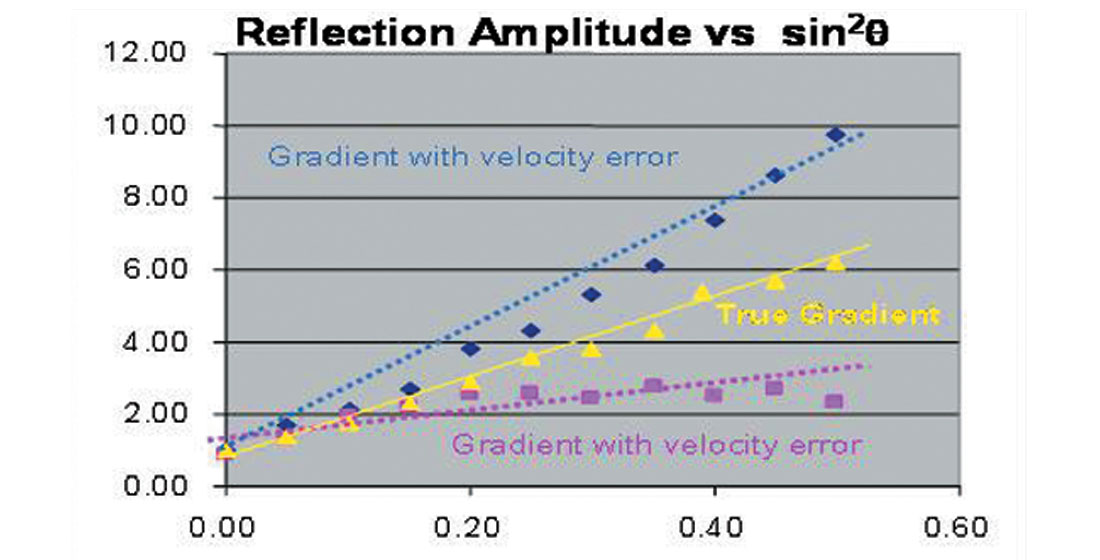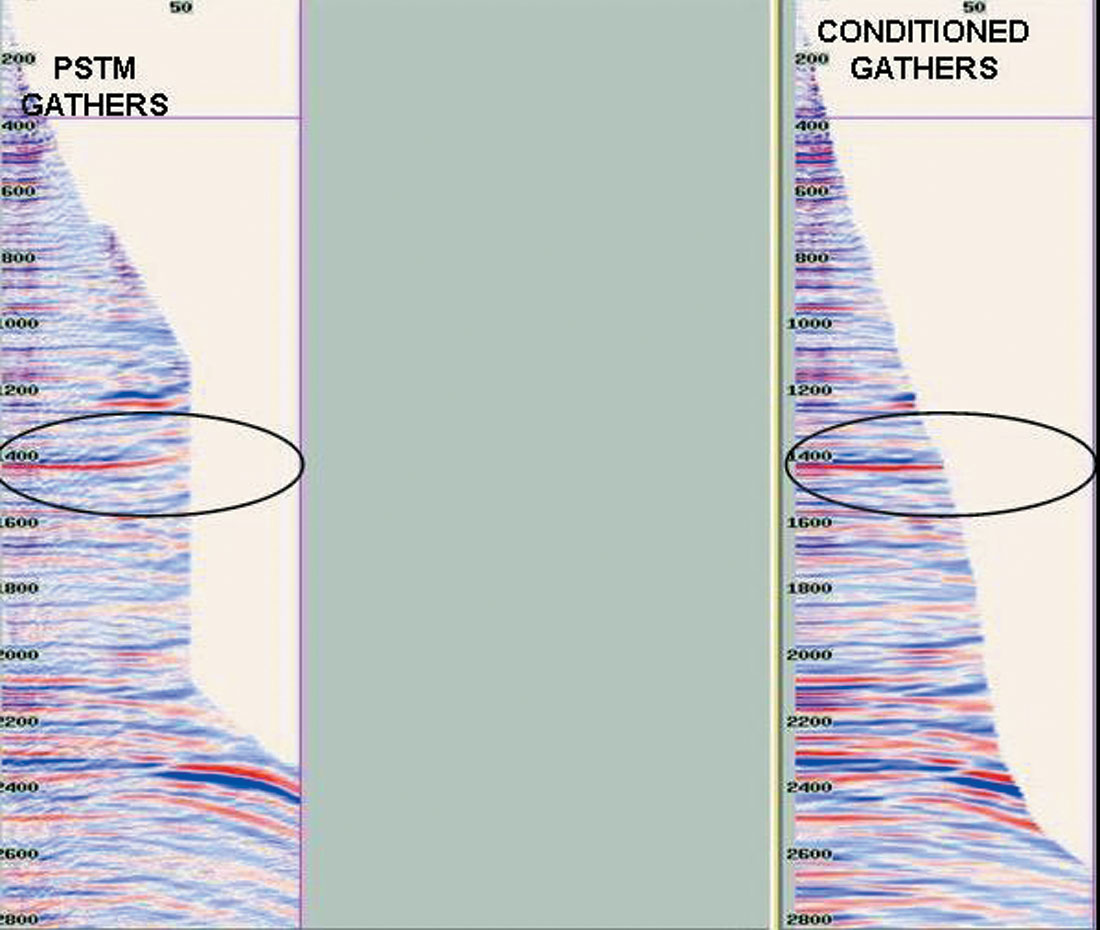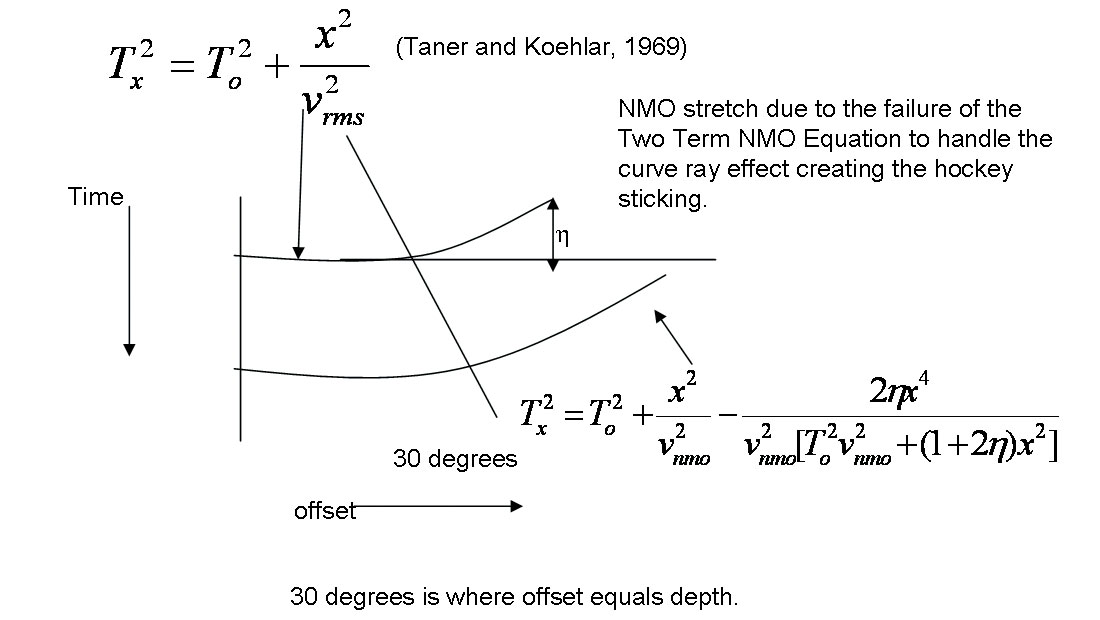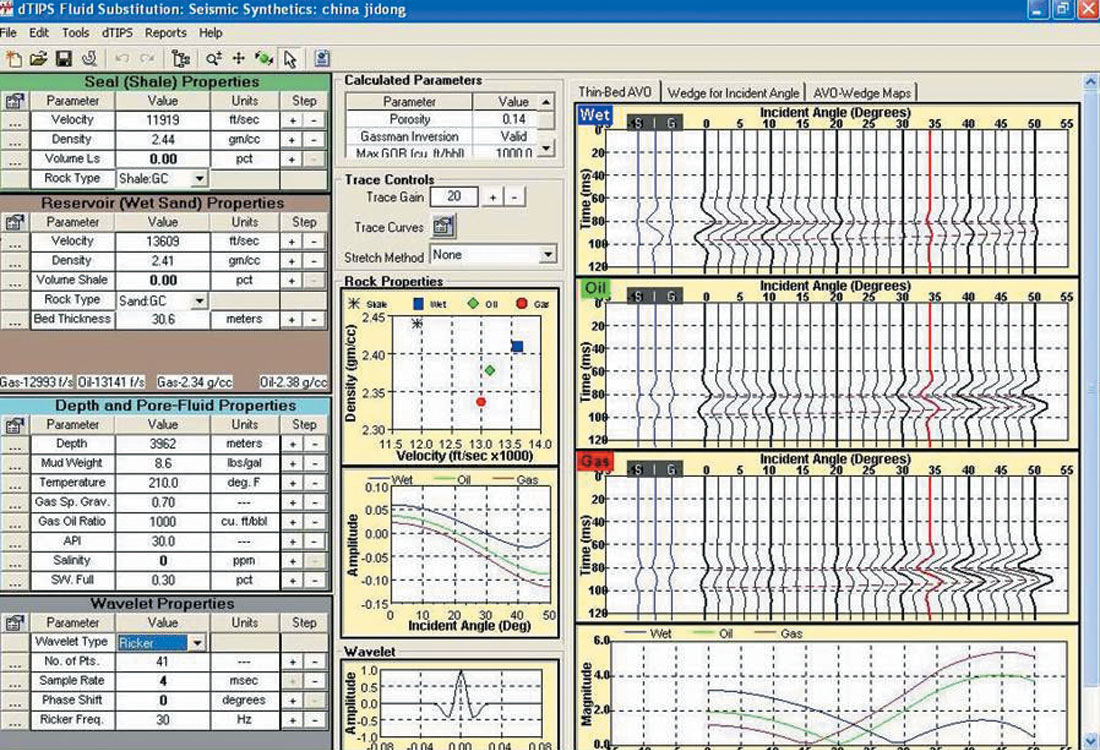AVO has played a significant role in exploration over the last 20 years. However, the use of amplitudes as a direct hydrocarbon indicator is still not as reliable as desired. On the other hand experience demonstrates some of the issues needed to be addressed exist within the seismic data itself. Factors within the seismic data affecting the AVO attributes include (Whitcombe et al, 2004):
- Residual velocity;
- Anisotropy;
- NMO stretch (Keho et al, 2001);
- Gain; and
- Overburden effects.
If these factors are not compensated for, then there may be some leakage of the intercept into the gradient (Hermann and Cambois, 2001; Cambois, 2002) and the AVO attributes such as Fluid Factor may be reduced to the far offset stack (Cambois, 2002).

Gather conditioning after prestack migration allows us to correct these issues within the gathers, including residual velocity and anisotropy.
We can break up the gather into two parts. The first part is 0 to 30 degrees of incidence angle where

(Two Term NMO equation) will flatten the gather. This is where we pick the RMS velocity for stacking of the data and this is also where we have residual NMO. We utilize the BP AVO Workbench AVEL in order to calculate the residual velocity field to flatten this portion of the gather.

If we are to go beyond 30 degrees of incidence angle then we have issues with the NMO stretch which is caused by the failing of the Two-Term NMO equation which is a hyperbolic equation. The Two-term NMO equation fails because it does not take into account the curve ray effect at the rock boundaries, but it is good for a straight ray approximation. In order to correct the seismic event on the gather beyond 30 degrees we need to utilize a new variable called η which theoretically is a measure of the weak anisotropy within the rock (Thomsen, 1986) and also the curve ray effect combined. We utilize the

(Alkhalifah and Tsvankin, 1995) equation in order apply the η term to flatten the gather.
This 3rd Term Move Out equation yields a flatter output reflector on the CDP gathers because of the curve it uses is no longer hyperbolic but is adjusted to take into account the curve ray effect and the weak anisotropy (Thomsen, 1986). The curve we use better fits the shape of the curve on the gather so when we move out the data we have less NMO stretch on the far offsets.

In addition, industry often fails in tying AVO anomalies into well modeling. Too often there is a large disconnect between geophysics and petrophysics. Geophysicist and petrophysicists complement each other, even though our functions are often kept in separate silos within too many E and P companies. Not integrating the exploration team leaves geophysicists focusing on what can be drawn from the seismic data and the petrophysicists building models which sometimes are eventually be compared to the seismic data (Sneider, 1990). In order to understand AVO in the seismic data we need to do fluid substitutions and look at how it changes the AVO attributes, and we need to build pseudorocks from the well data and look at the seismic response.
We emphasize these points with a land seismic case history from Asia, where the rocks are Mesozoic in age. After reviewing the traditional interpretation of the seismic data, we look at the AVO interpretation, tying the AVO interpretation into the well modeling and fluid substitution. We also look at AVO and fluid substitution models created using a new PC product developed by Fred Hilterman called d-TIPS (database Toolkit for Integrating Petrophysics and Seismic). d-TIPS allows us to change parameters and play “what if” games with the well data.

By bringing the seismic data and petrophysical AVO modeling together as soon as possible in the interpretation process, there is a better chance of unraveling true AVO signatures in the data. The interactive nature of d-TIPS allows answers to modeling options to be derived before the question being explored is forgotten.











Join the Conversation
Interested in starting, or contributing to a conversation about an article or issue of the RECORDER? Join our CSEG LinkedIn Group.
Share This Article